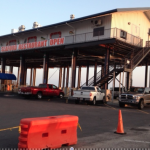Lessons from Biloxi, Miss., Relevant to Rebuilding NJ and NY
I’m here in Biloxi, Mississippi to attend the annual Tri-State VOAD Conference for the states of Louisiana, Mississippi, and Alabama. In attendance are the leaders of nonprofit organizations, government officials and faith-based organizations that provide disaster relief and recovery in these gulf coast states. If I were a war correspondent, I would describe the nonprofit leaders attending this conference as “battle-hardened veterans.” They […]

I’m here in Biloxi, Mississippi to attend the annual Tri-State VOAD Conference for the states of Louisiana, Mississippi, and Alabama. In attendance are the leaders of nonprofit organizations, government officials and faith-based organizations that provide disaster relief and recovery in these gulf coast states. If I were a war correspondent, I would describe the nonprofit leaders attending this conference as “battle-hardened veterans.” They have been through a lot in the last decade. Hurricane Katrina was the biggest and most deadly storm, but not the only one.
These veterans have been through Hurricanes Rita, Isaac, Dennis, Ivan and many deadly tornadoes. But if this were a war, these veterans would be receiving special equipment, reinforcements and lots of training to improve their skills. This being the nonprofit sector, these organizations pretty much have to fend for themselves, with a mix of welcome but insufficient philanthropic grants and a little bit of government support.
Twanda Lewis, the forward thinking president of the Louisiana VOAD said today that we need to recognize that disasters are now a regular part of our life and it’s time to do more to improve the capabilities and capacities of the VOAD organizations.
Biloxi stills shows scars from the destruction caused by Katrina when it hit on August 29, 2005. In Biloxi, 53 people died and according to then-Gov. Haley Barbour, 90% of the buildings along the Gulf Coast were destroyed. Most were casinos and restaurants, which drew tourists and served as a major economic driver. Many of the casinos have been rebuilt and according to the local newspaper there are 12 casinos along the entire Mississippi coast and another 24 inland. But most of the historic, white-columned homes are gone and will never be replaced.
 I walked down Beach Drive, along the coast, after our meetings today and as you can see from these pictures, most of the land now lies vacant. According to several authorities I spoke with today, new FEMA regulations mean the cost of rebuilding a home has sky-rocketed due to new building codes and insurance costs.
I walked down Beach Drive, along the coast, after our meetings today and as you can see from these pictures, most of the land now lies vacant. According to several authorities I spoke with today, new FEMA regulations mean the cost of rebuilding a home has sky-rocketed due to new building codes and insurance costs.
As I walked through Biloxi, I kept thinking of New Jersey. I was looking for a crab shack along the water’s edge for a quick beer and a few oysters – just like I used to go to with my family when we lived in New Jersey. But the Biloxi coast now is primarily taken up with massive fortress-like casinos designed to withstand the next hurricane.
 The only sea food place on the coast I could find was one built on huge stilts in the parking lot of a casino . My waitress told me we were up 28 feet – the height of the Katrina surge.
The only sea food place on the coast I could find was one built on huge stilts in the parking lot of a casino . My waitress told me we were up 28 feet – the height of the Katrina surge.After Hurricane Sandy, New Jersey Gov. Christie vowed to return the Jersey Shore to the “way it had been when he was a child.” If Biloxi is any indication, the governor is going to be very disappointed.
Our lunch hour speaker was U.S. Rep. Bennie Thompson of southern Mississippi, the Ranking Member of the Homeland Security Committee. Rep. Thompson made a point of saying how furious he was that certain Congressmen from the gulf coast voted against the recent Hurricane Sandy relief bill.
“How is it possible that some one can say we don’t need a federal response to natural disasters? How can an American citizen vote against a fellow American in need because of beltway politics?” He urged gulf coast residents to let those nay-sayers who work with disasters in the gulf coast hear from them. Rep. Thompson also said that from now on after a natural disaster we’re going to need to rebuild smarter. This could take the form of requiring elevation on new construction. Or worse, telling others they can’t rebuild their house. “If you expect American taxpayer support,” he said, “you need to respect the fact you are using taxpayer dollars and you can’t do whatever you want with your property.” Tough words, but I was pleased to hear this important committee member is thinking about this important public policy issue.
My trip to Biloxi left me with mixed feelings. Historic homes and a traditional way of living on the edge of the water seem lost forever. But with smarter development and a better respect for the power of nature, we may be seeing new traditions being born and better ways of helping those in need.
See more photos from Biloxi.
